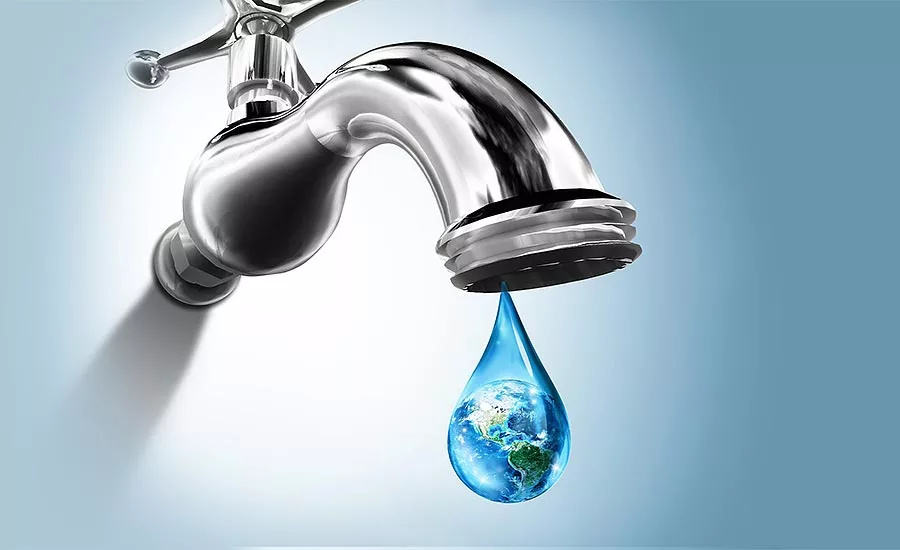Codes Corner: Water efficiency is critical to creating sustainable and resilient communities
Model building codes and standards have already begun addressing this.

RomoloTavani/iStock / Getty Images Plus via Getty Images
As the creation of sustainable and resilient buildings becomes a greater priority, especially over the past year, one critical component will be to ensure our buildings are water efficient. After all, clean water is the world’s most precious commodity, and without proper conservation, we will soon find ourselves without this finite resource. While 70% of our planet is covered with water, less than 1% is drinkable and ready for everyday use.
Luckily, model building codes and standards have already begun addressing water efficiency and conservation. However, no single code or standard can fully address every facet of the issue. Instead, it will take a holistic approach, utilizing codes and standards from all areas such as plumbing and mechanical, residential and commercial, and energy conservation.
The role of plumbing codes and standards
Understanding water is a finite resource, many jurisdictions, manufacturers, organizations and individuals around the world are working to improve water conservation, bring water efficient products to market, label new homes and structures as more water efficient and spread the word about the need for smart water use.
As part of this endeavor, buildings codes and standards like the International Plumbing Code (IPC) and the International Residential Code (IRC) incorporate innovative technologies including waterless urinals and detailed engineered designs that permit the installation of smaller, more precise water usage and water drainage systems, resulting in the savings of millions of gallons of water.
The importance of adopting a suite of codes
Codes and standards often target very specific parts of building design and engineering, such as how the IPC specifically focuses on the plumbing system, but this does not mean there cannot be overlap.
For example, both the IRC and IPC include water efficiency provisions for non-potable water systems and subsurface landscape irrigation systems for use with non-potable water from on-site water reuse systems. The coverage includes the required details about the collection, storage, treatment and reuse of non-potable water. By including provisions in both codes, states and local jurisdictions who may have adopted one or the other, are still able to reap the benefits and achieve water efficiency.
However, for those states and jurisdictions that have not adopted the full family of I-Codes, there can still be gaps. For instance, requirements for water fixture flow rates in commercial buildings are regulated by the IPC, whereas requirements for water fixture flow rates in residential buildings are regulated by the IRC.
This is because codes and standards were created with collaboration in mind. It is nearly impossible for one code or standard to cover all parts of a commercial building. Therefore, model codes and standards like those in part of the I-Codes, while effective individually, should be adopted and implemented as a cohesive suite.
Building water efficiency with green codes and standards
While codes and standards like the IPC and IRC provide the base for water efficiency and conservation, the International Energy Conservation Code (IECC) and “green” codes and standards like the International Green Construction Code (IgCC) focus on aspects like increased energy conservation and sustainability to provide reasonable increases to commercial and residential energy efficiency requirements.
These conservation benefits stem from stringent requirements on the equipment and piping used to produce and distribute hot water throughout buildings and homes, plus pools and spas. Through these types of codes and standards, designers and engineers must adhere to minimum safeguards for water fixture flow rates and water heater efficiency ratings.
In fact, compliance with the IECC’s water efficiency provisions is based on the following application of basic, cost-effective design practices:
- Minimize standby losses with heat traps, thermal insulation and temperature controls;
- Reduce distribution losses with thermal insulation and system temperature controls or eliminate through point-of-use heaters;
- Increase overall system performance by utilizing high-efficiency sources; and
- Increase efficiency of supply piping by limiting flow rate and pipe length or volume.
The IECC mandatory requirements limit the amount of water wastage due to getting hot water from the hot water source to the fixtures, plus they attempt to minimize the amount of energy wasted when previously heated water cools within piping systems.
Due to water scarcity, droughts and water contamination in many areas of the world, water conservation and efficiency have become crucial conversations amongst building safety professionals in recent years. As the building industry looks to increase water efficiency within both new and existing buildings, it will take collaboration from across the spectrum — developers, property owners, designers, engineers and building occupants — to implement effective change.
Looking for a reprint of this article?
From high-res PDFs to custom plaques, order your copy today!







